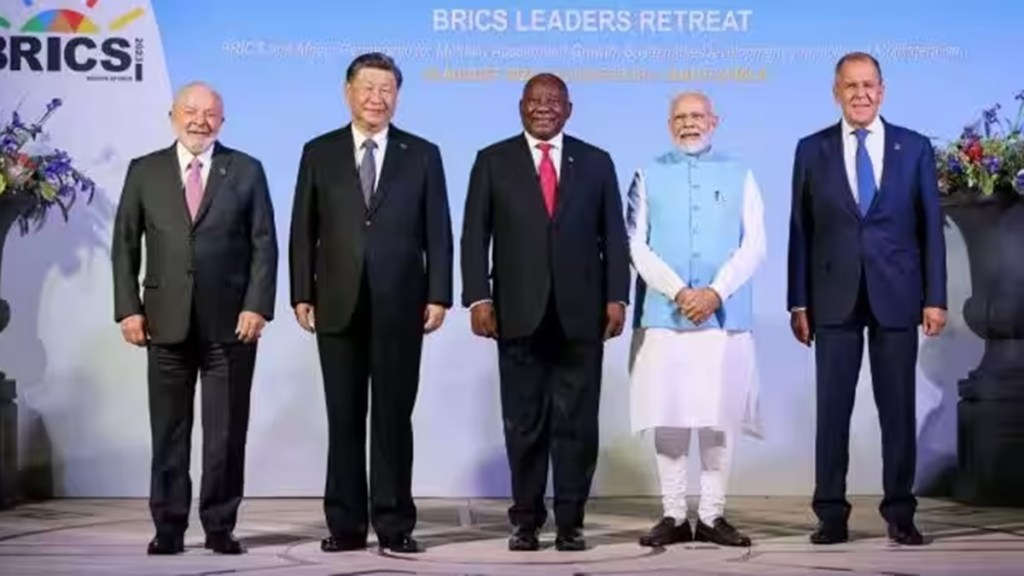The 15th Brics summit in Johannesburg—the first in-person get-together since 2019—has attracted tremendous international interest. This acronym became a buzz word after Jim O’ Neill of Goldman Sachs highlighted Brazil, Russia, India and China’s prospects as major world players in 2001. South Africa later joined this grouping in 2010. Strategic analysts dismiss Brics as only a quintet of mid-sized economies that aim to counter-balance the US but lack the mortar or cohesiveness to have geopolitical significance in the world economy. This is far from true, as 40-odd developing countries want to join the grouping. Although Brics members have supported expansion, there were differences over how much and how quickly. Argentina, Egypt, Ethiopia, Iran, UAE, and Saudi Arabia have been invited to join as full members from January 1, 2024.
As for their geopolitical significance, Brics’s share of the global GDP has steadily risen to 26% from 8% in 2001, while that of the G-7, a grouping of the richest advanced economies, steadily declined to 43% from 65% over this period. Russia’s war in Ukraine and Sino-American trade tensions may lend impetus to moves to undermine US hegemony. But India is not on the same page as it has strategic relations with Russia while increasingly aligning itself with the West, especially the US. In fact, Brics, in all its summits from 2009 to 2023, has supported a multi-polar, equitable and democratic world order and has demanded a greater voice and participation for the Global South in institutions like the IMF, World Bank and UN.
India, for its part, has a constructive engagement with Brics, exemplifying its drive to strengthen development cooperation outcomes for the Global South. It is true the grouping is dominated by China with which it has had tensions over a continuing border face-off. But prime minister Narendra Modi and Chinese president Xi Jinping agreeing to a deescalation in Ladakh, on Thursday in Johannesburg, is a much-needed thaw. However, India still feels that this grouping has relevance in a multi-polar world that is rapidly rebalancing. India has consistently highlighted how institutional reforms in Brics nations have increased its effectiveness to deal with the needs of developing countries. A case in point is the New Development Bank, which has so far approved $32.8 billion for 96 projects for infrastructure and sustainable development. NDB plans to begin lending in Brics currencies to reduce reliance on the US dollar. It is expected to scale up its lending, especially with the addition of new members, to $350 billion over the next decade. At the 2012 Delhi summit, the grouping decided to expand intra-Brics trade through the greater use of local currencies. But getting to a yuan-anchored Brics currency to challenge the dollar’s status as the world’s reserve currency is a bridge too far. India has serious misgivings on this issue. At Johannesburg, it was agreed to task Brics finance ministers and/or central bank governors to consider the issue of local currencies, payment instruments and platforms and report back to the leaders by the next summit.
For Brics to address issues confronting the Global South, it is imperative that the members stick together although their economic trajectories are sharply divergent. Despite their internal contradictions, Brics will be taken more seriously if the grouping offers meaningful solutions rather than represent the problem for developing countries, especially in Africa, that are confronting threats to their energy and food security due to Russia’s ongoing war in Ukraine. A Brics-led peace initiative to end the war will truly be a game-changer.

